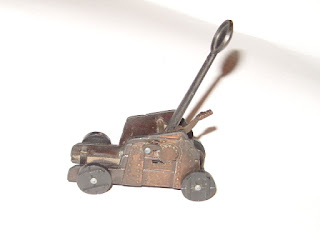This postcard records the record run in a motor vehicle in 1913 by Ivan Beaucleck Hart-Davies from John O'Groats in Scotland to Land's End in Cornwall. This he achieved with his co-driver, and the assistance en-route of guides, in a record time of 34 hours 39 minutes to cover the 886 miles. He had achieved the same record two years earlier on a Triumph Motorcyle in 29 hours 12 minutes.
His average speed was twenty-five and a half miles per hour, and therefore in breach of the Motor Car Act of 1903 which set the maximum speed for motorised vehicles on the road at twenty miles per hour.
Hart-Davies joined the Royal Flying Corp in 1916, the precursor of the RAF, and was killed in a flying accident in England aged thirty nine, shortly before his intended transfer to the battlefront in France.
More information about Hart-Davies can be discovered online.

